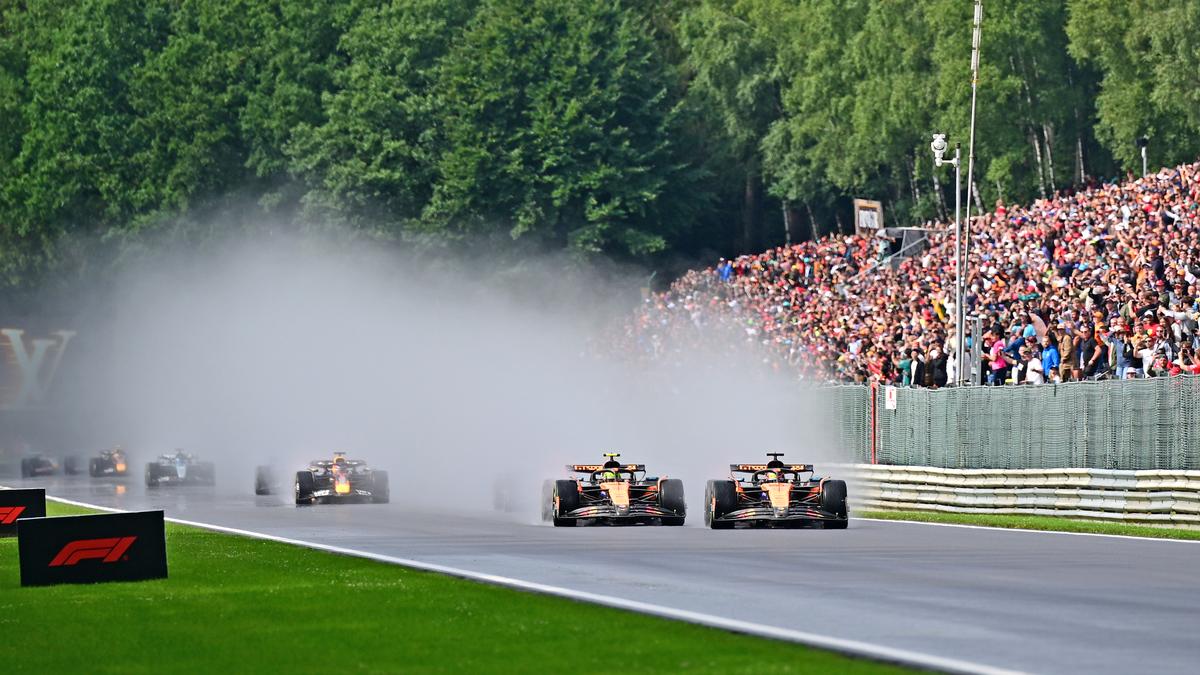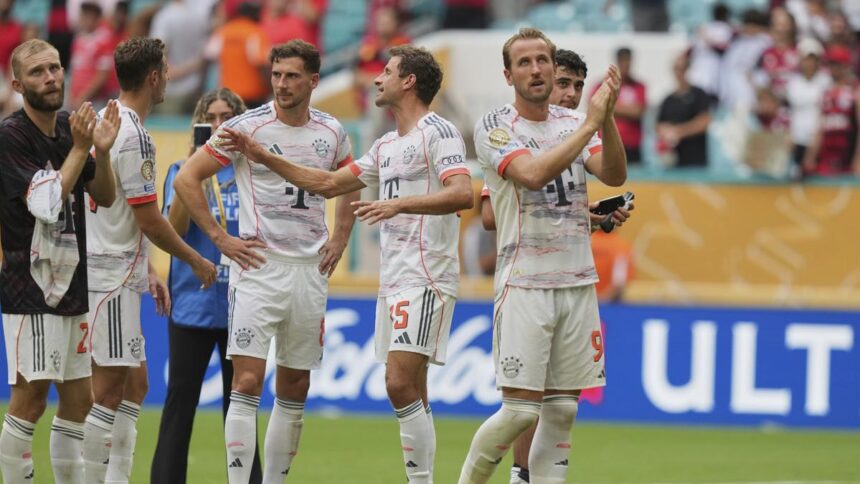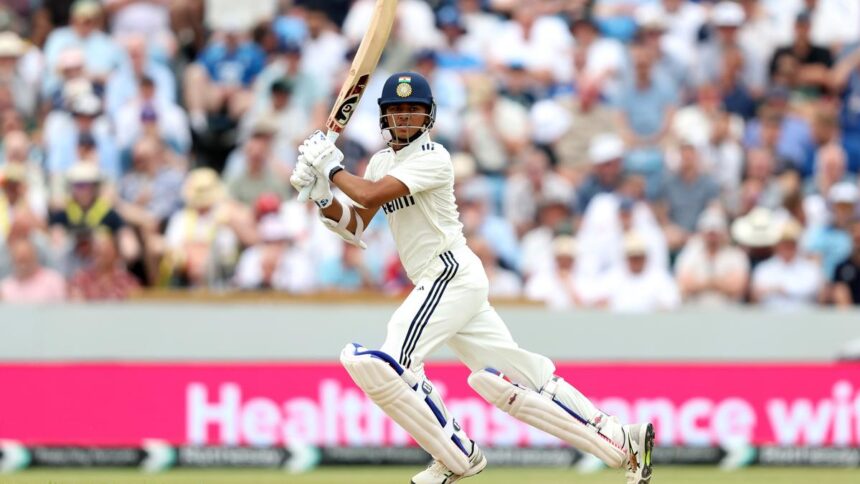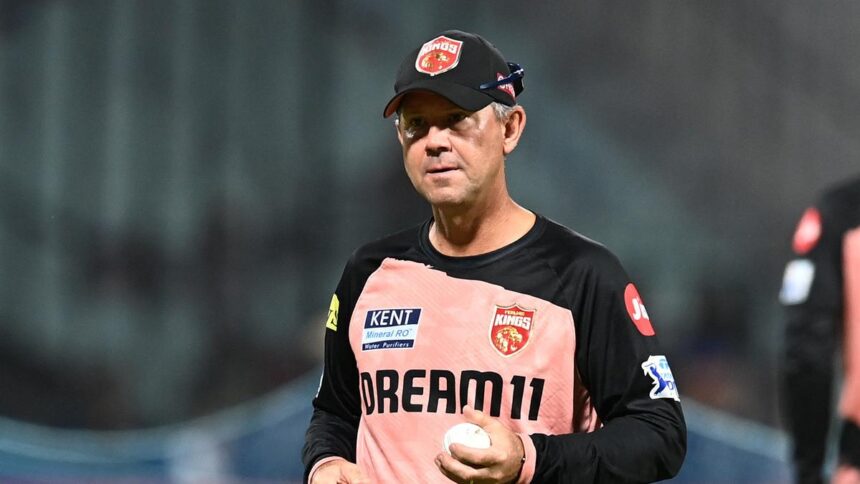It has been a frantic first half of the 2025 Formula One season, with 14 races crammed into four-and-a-half months. As the F1 caravan takes a much-needed breather — the annual summer shutdown — before the final 10-race run, it is a good time to reflect on the year so far.
Reigning constructors’ champion McLaren has continued its dominance, winning 11 of 14 races, and its drivers Oscar Piastri and Lando Norris are separated by just nine points at the top of the drivers’ standings.
In safe waters
The Papaya team enjoys a 299-point lead over Ferrari and, barring a precipitous drop in form, is well on course to sealing a second consecutive constructors’ crown. This means the team is more than happy to let its drivers battle it out for the big prize without having to worry about the cost of potential on-track shenanigans.
More importantly, 2025 is the last year of the current technical regulations. Most teams have already switched focus to the new regime, coming in next season. And given the budget cap, introduced in 2021, teams with deep pockets can no longer spend their way out of trouble mid-season. This means the form guide is unlikely to significantly change for the rest of the year.
The current set of regulations has been a puzzle the teams have struggled to solve. The competitive order has varied wildly over the last four years. In a bid to promote better racing, F1 and the FIA focused on ground-effect cars, which generate most of their downforce from the floor. This is done by lowering the car’s ride height to create a low-pressure area between the floor and the track; effectively, the car is ‘sucked’ to the road.
Since cars don’t rely primarily on the front and rear wings for downforce, as they did in the previous era, the turbulent or ‘dirty’ air behind a vehicle reduces. Cars can follow each other more closely, which makes overtaking easier.
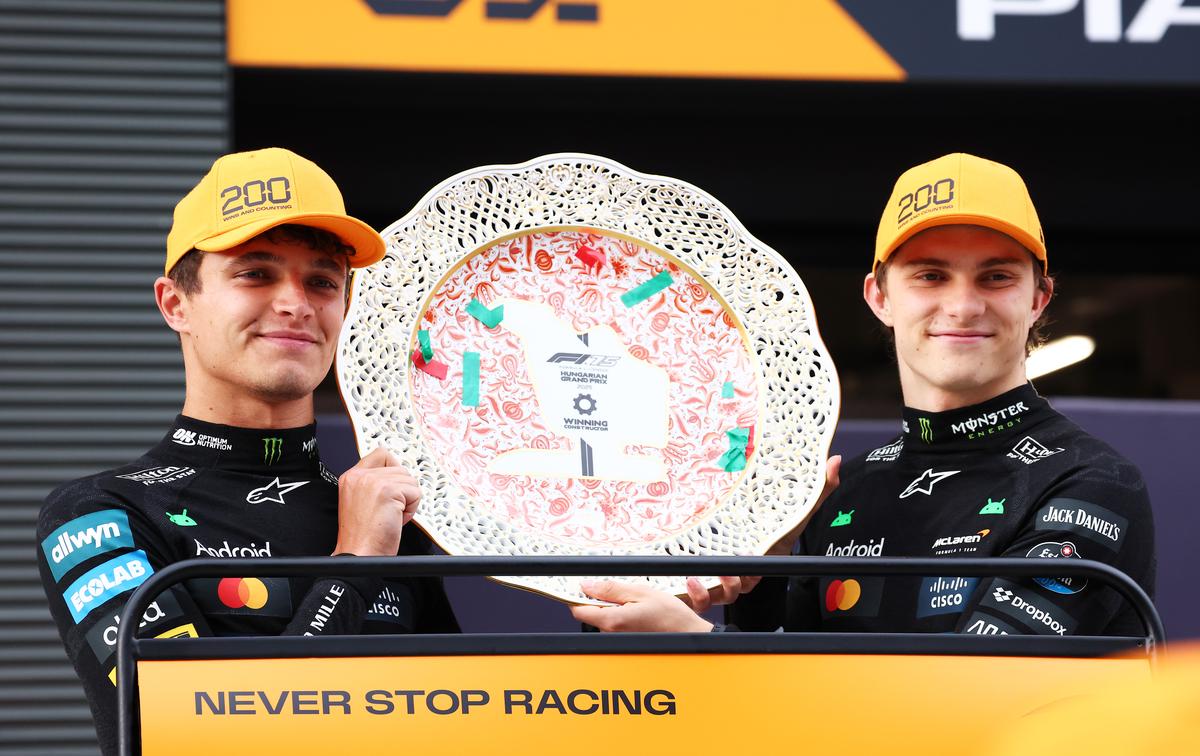
Podium regulars: The championship battle between Oscar Piastri and Lando Norris has ebbed and flowed, with little to separate them.
| Photo Credit:
Getty Images
Typically, in the later years of a stable regime, teams converge on similar philosophies and the field compresses. But this has not been the case in the ground-effect era. Teams have found that just adding downforce doesn’t work because it affects the car’s balance. So, what the teams see in the data back at their base often doesn’t correlate well with what happens on track.
In the first two years, teams — especially Mercedes — struggled with a phenomenon known as porpoising, in which the car violently bounces on the straights. Red Bull — led by its former design genius Adrian Newey, who had worked on ground effects in his earlier days — aced the challenge and dominated the first two seasons.
But Red Bull’s upgrades from the middle of last year have made the car trickier to drive. Only Verstappen’s genius allowed him to clinch a fourth successive drivers’ title. McLaren’s mid-season turnaround in 2024 and Norris’ spirited charge came a bit too late in the season.
Verstappen has produced moments of magic in 2025. He stayed in the hunt in the early part of the year after nicking two wins, but even he can do only so much in a car that swings from second- to even fifth-best at times. He is now destined to be dethroned.
Similarly, Ferrari has had a topsy-turvy ride this era. The Italian marque started promisingly in 2022, faltered the following season, and came within 15 points of beating McLaren in 2024. This year, the Prancing Horse is again facing issues. It is the only top-four team without a win.
Stark contrast
This shifting competitive order is in complete contrast to the previous rule-set. Mercedes’ early-mover advantage was baked in at the start of the hybrid era in 2014. It took Red Bull until 2021 to wrest at least one title away from the German giant.
One of the key reasons for McLaren’s rapid rise is its emphasis on designing not just a fast car but also a predictable one. This has given its drivers confidence, even if the car’s advantage is not overwhelming.
The second-most successful team in F1 history — behind Ferrari — has built on its strong platform this year, employing ingenuity to control thermal tyre degradation. None of its rivals has been able to match it on this count. McLaren’s edge has borne fruit in hot races like Miami, where, at some points, it had a one-second-per-lap margin over its competitors.
But even McLaren has not been immune to developmental curveballs. At the start of the year, its drivers, especially Norris, complained about a lack of feeling from the front end.
Norris made a lot of mistakes in the first third of the season, notably in Bahrain and Jeddah, when he said he wasn’t as comfortable in the car as he was in 2024. Piastri, in contrast, managed to drive around the limitations and commit fewer errors.
McLaren addressed the issue with new front suspension geometry, and Norris has been happier since its introduction in Canada. The British driver has won three of the last four races. Piastri, though, has opted not to use the tweak. He doesn’t want to add another variable when the team is introducing performance upgrades.
Even though Piastri’s lead has been trimmed, the 24-year-old has shown good pace and was a touch unlucky not to win in Britain and Hungary despite being faster than his teammate.
The battle between the two has ebbed and flowed based on the track layout, with little to separate them. Norris enters the second half of the season with momentum, looking forward to a few tracks he excelled at last year. He can also fall back on the experience of having been in a title fight, even if it was only an outside shot last year.
Piastri, despite his inexperience, has proven he belongs at the top end. He might even have a slight edge in mental toughness over his teammate. He is firm and clinical in wheel-to-wheel combat, something Norris has lacked. He is also a quick learner, having improved in qualifying and tyre management over his three seasons in F1.
When opportunity knocks
Both drivers realise this is their best chance, considering everyone starts afresh under a new set of regulations, which differs considerably from those in force. They know there is no guarantee McLaren will continue to be at the top.
In years when one team is so dominant, the two drivers must be closely matched to sustain the interest.
From what we have seen so far, the title fight will go down to the wire, and we are in for an exciting finish in the second half of the season.
Published – August 08, 2025 11:22 pm IST








